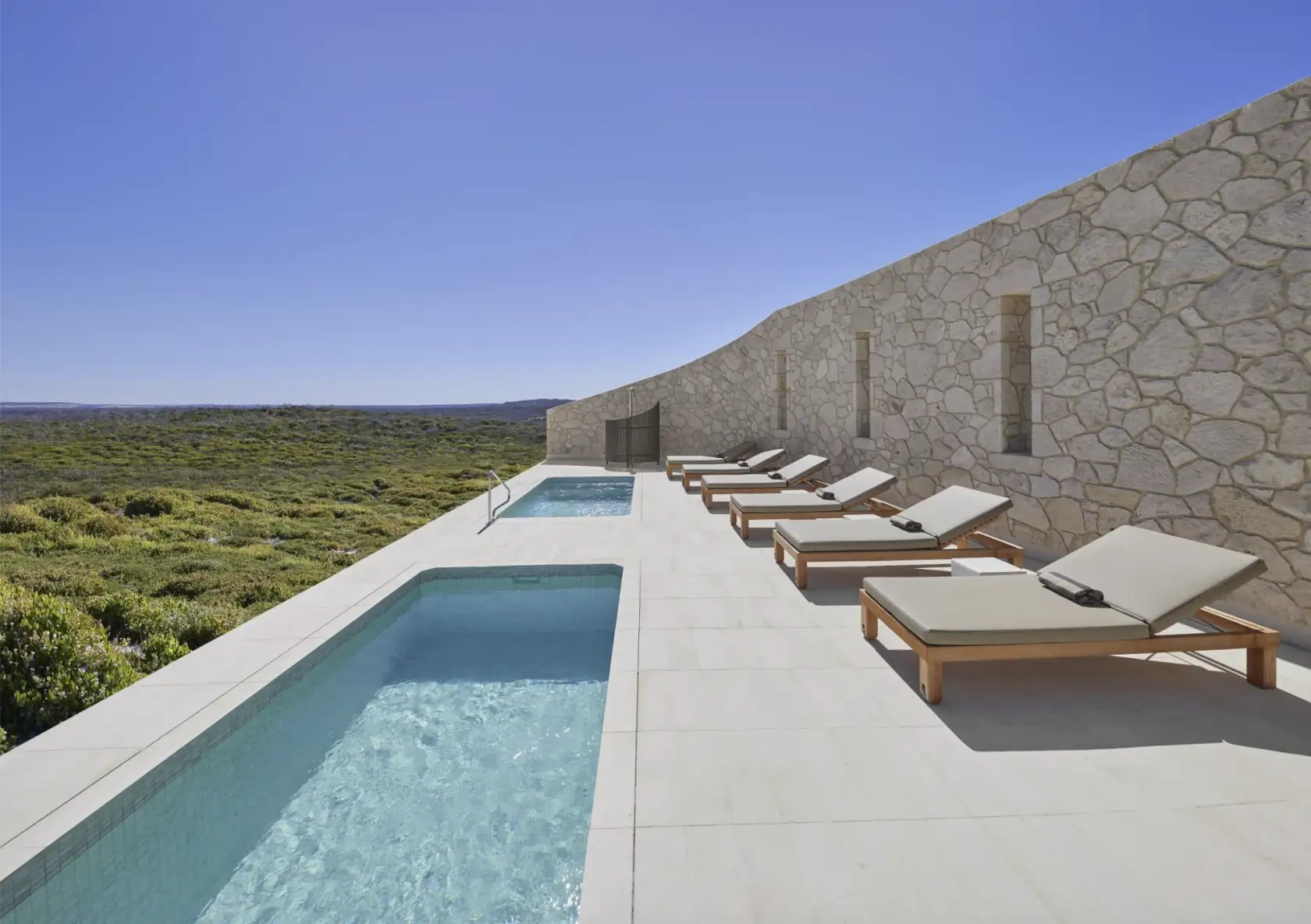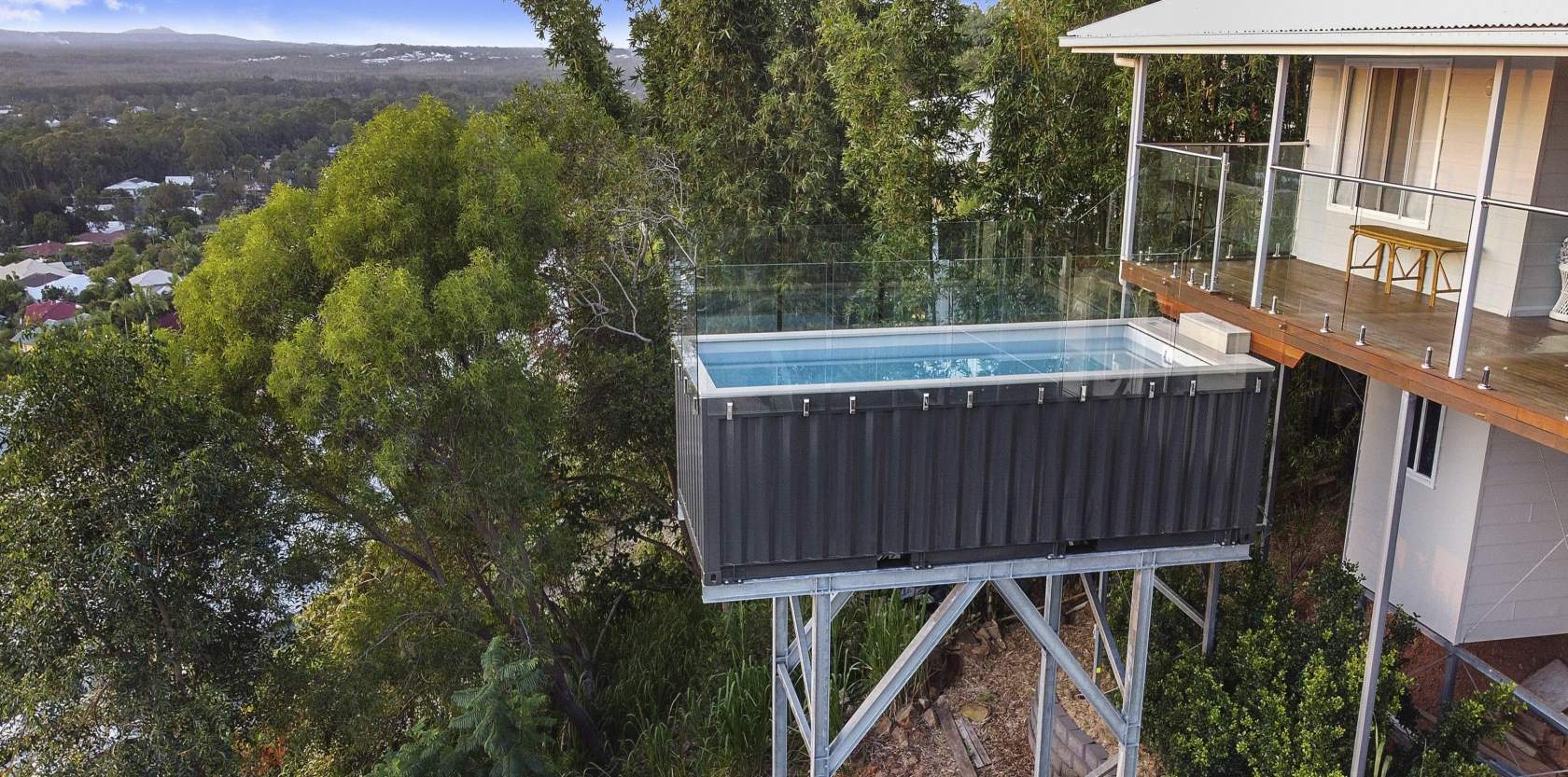

Above Ground vs Inground Spas: Pros & Cons
For any would-be spa owner, the comparison between above ground and inground spas is guaranteed to come up. It’s important for homeowners and prospective spa buyers to know the differences between the two options to make the best decision for their property. It's worth noting that there actually is a lot to separate these spa types beyond their relation to the ground, and it can be tricky to make like-for-like comparisons as they are very different choices.
Broadly speaking, an above ground spa is the kind you buy from a showroom or spa shop, take back to your place, and install. In contrast, an inground spa requires builders and other professionals to construct it. In this post, we'll look at all the key differences between above ground and inground spas.
Design Freedom vs Complete Package
One of the great appeals of an inground spa is that you can truly have it your way. It can be customised and designed to your exact specifications. With edits going right down to the most minute details. Giving you the choice of tiling, equipment, colour and even the landscape surrounding it. Inground spas can also be part of a pool or as a standalone addition.
Above-ground spas, on the other hand, do not offer the same freedom of choice. With most above ground models being purchased as the completed item and with no room for further customisation (although customised models are available from some suppliers). The benefit of this is that above ground spas generally have everything you need right from the get-go. So you don't actually have to worry about the design and choosing features, as many above ground spas come with a magnificent list of inclusions as it is.
Price and Value Addition Potential
Generally, spas are not viewed in quite the same way as pools are when it comes to the way they affect the value of your home. But that said, it doesn't mean that they can't provide additional value when the time comes to sell.
Inground spas are considered a more permanent installation. And with the number of landscaping options surrounding them, there is real potential to transform a backyard with the installation of an inground spa. On the other hand, above ground spas are seen as less permanent and more of a luxury furniture item. As a result, they usually don’t add as much value to a home. But another benefit of above ground models is that you can just take them with you when you move!
As for price, it's difficult to make a like-for-like comparison since both types of spas can vary greatly, based on their size and included features. Inground spas are usually the more expensive option, costing an average of around $12k-$24k including installation. Whereas above ground spas have a range of $2.5k-$20k. However, it's worth noting that both types of spas can be much more expensive than those averages.
Longevity
The next thing to consider is longevity. After all, spas of both kinds represent a significant investment not only in outright cash, but also in time and effort. So it goes without saying that you'll want your spa to last for as long as possible!
The exact lifespan of an above ground spa will depend greatly on which make and model you choose. Different construction materials and the level of detail and care that went into making your spa will be the defining factors around longevity. This is also somewhat affected by climate conditions, such as high temperatures or particularly salty air, but these are far less relevant than how the spa was made. You can expect an above ground spa to last anywhere between 5-20 years. Additionally, carrying out occasional maintenance on the spa equipment will help contribute to the lifespan of your purchase.
Inground spas generally last longer than above ground spas, but this still relies on the spa having high-quality parts. This is for a few reasons, such as the fact that they're installed into a concrete shell, which helps to protect them from external damage. Plus, they tend not to have any kind of electrical or filter connections exposed, as these are connected internally. This helps to reduce the amount of wear and tear on those components caused by weathering, making them last even longer than an above ground model.
Inground spas can also require less maintenance due to their construction and design, translating into further cost savings for owners over time. You can expect an inground spa to be good for around 20 years if taken care of properly!
Installation
The last thing to consider when choosing between an above ground and inground spa is installation. This is often a defining factor for potential buyers as they have to consider how much effort they're willing to put into the purchase of their spa. Is this something to be seen as a project for home improvement? Or is it simply something you wish to purchase and have done with?
Inground spas require a more complicated, long-term installation process than their above ground counterparts, as they require professionals that will landscape, excavate and install the spa.
That said, there are still some considerations when it comes to the installation of an above ground model. You'll need access to electricity nearby to power up your new spa's pump filter system, and of course, you'll need access to water. An above ground spa usually requires at least one visit from an electrician and often a plumber as well.
Both above ground and inground spas offer unique benefits that make investing in either one worthwhile. No matter which one you choose, you'll be purchasing a little slice of paradise for your backyard and one that will provide entertainment and relaxation for years to come. If you want to see all of what the pool and spa industry has to offer, why not check out the annual Pool & Spa Lifestyle Expo in your state?
